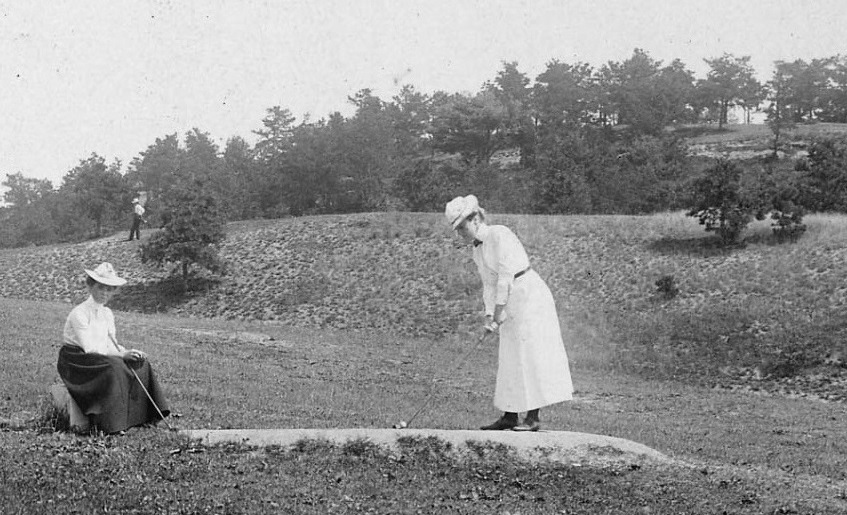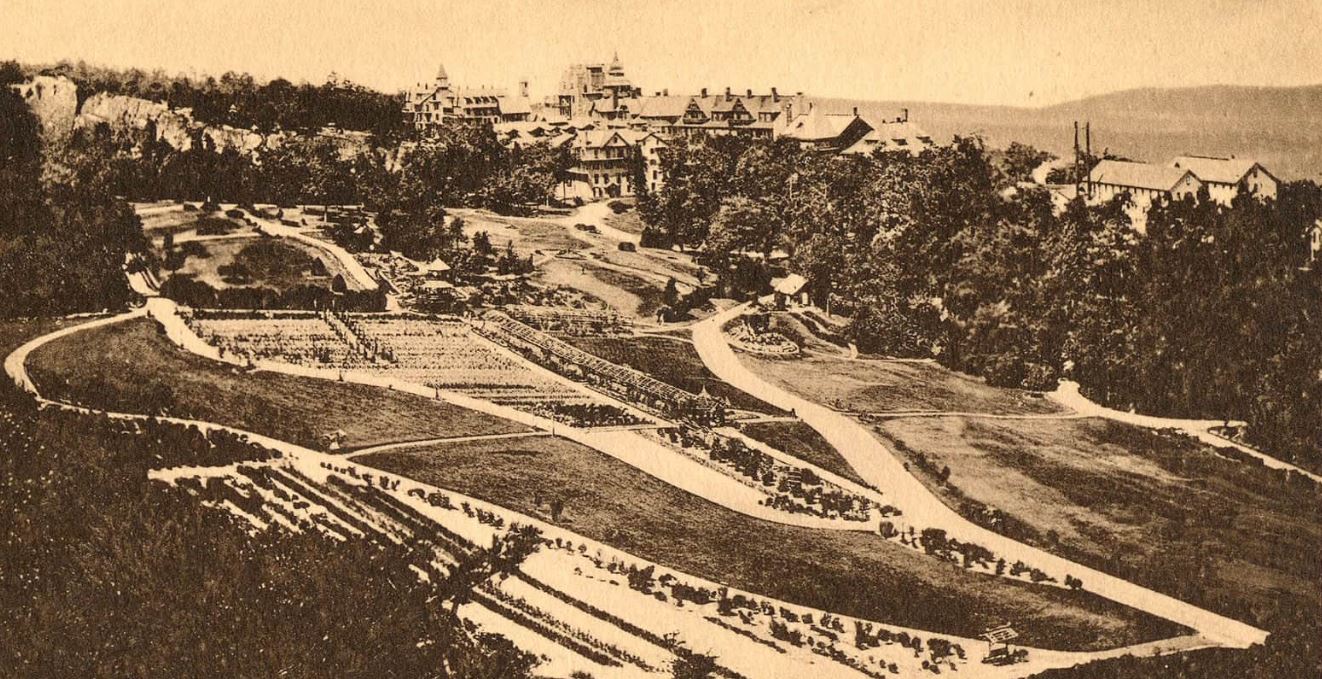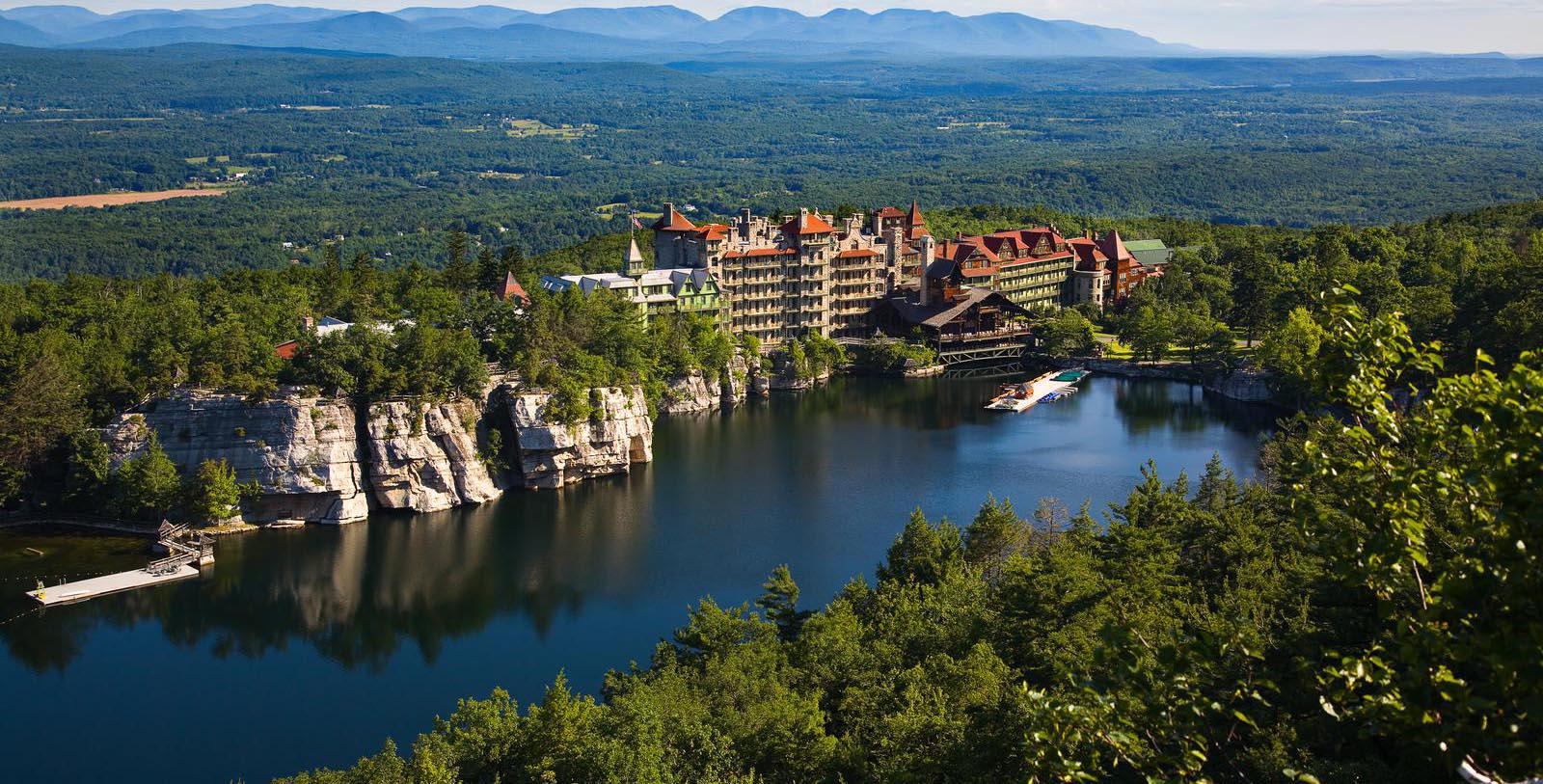Receive for Free - Discover & Explore eNewsletter monthly with advance notice of special offers, packages, and insider savings from 10% - 30% off Best Available Rates at selected hotels.
historic golf course
Discover the historic Mohonk Golf Course, which was designed by Scottish landscape architect Robert Pryde at the height of the Gilded Age.

Golfing at Mohonk Mountain House
This Scottish-inspired nine-hole golf course has been in use since 1897, making it one of the most historic in the country.
WATCH NOWIn the years immediately following Alfred H. Smiley’s debut of the Mohonk Mountain House, the resort hotel had rapidly emerged as one of the most fantastic places to stay in all the Northeastern United States. The stunning geography of the surrounding Shawangunk Ridge especially made the Mohonk Mountain House popular among travelers interested in experiencing peaceful serenity while on vacation. Over time, the resort became the choice destination for countless Americans across the country, including influential entertainers, politicians, and business tycoons. In fact, a couple U.S. Presidents—Rutherford B. Hayes and Chester A. Arthur—had even visited the hotel in that span of time. Amid the location’s ascent into national prominence, Alfred H. Smiley began looking for new ways to further augment its luxurious appeal. During the 1890s, Smiley decided to introduce the game of golf at the facility. He specifically came to that conclusion after speaking with two guests who were returning from a walk out to the neighboring Mountain Rest Dairy Farm. They had commented that its erstwhile apple orchard would make for a great golf course, which inspired Smiley to build one there himself. Working alongside just a handful of employees, Smiley finally began constructing a brilliant nine-hole course upon the site during the mid-1890s.
The project was a massive undertaking for Smiley, who personally surveyed the ground and plotted the initial format. Taking months to complete, the new “Rest Course” beautifully traversed the verdant rolling landscape of the greater Shawangunk Ridge for some 1,600 yards. When the Rest Course finally opened in 1897, its wonderful scenery quickly made it one of New York’s most alluring destinations for golf. Called the “golf links” informally, its layout originally required players to navigate numerous challenges like wheat fields and fruit trees. A public road even bisected the route of the first hole! Nevertheless, the course surged in popularity, forcing the Smiley family to commission its enlargement a decade later. In 1911, the family hired Scottish golf course architect Robert D. Pryde from Connecticut to spearhead the redesign efforts. He then proceeded to craft an amazing renovation that masterfully expanded the size of the course to reach 2,350 yards in total. (He also removed the remaining obstacles left during the original phase of construction.) With championship-caliber qualities available for every hole, the golf course only continued to see its reputation climb. Today this historic golf course is known as the “Mohonk Golf Course,” the facility has since remained an exhilarating challenge for contemporary golfers. Indeed, the course continues to offer undulating paths, uneven lies, and exciting blind tee shots that provide for a memorable experience.
-
About the Location +
Mohonk Mountain House is located within the Shawangunk Mountains, which many consider to be among the most tranquil destinations in all New York. When Albert K. Smiley first purchased the land surrounding the Mohonk Mountain House, he set about developing an intricate system of hiking trails and carriage roads that many others could enjoy. Now extending for some 85 miles, these scenic pathways are still in use today. They guide guests throughout the grounds to such renowned locations as Copes Lookout and Eagle Cliff Road. But Smiley and his talented teams of landscape architects also set about crafting a series of brilliant English-style gardens that were popular throughout the industrialized world during the mid-19th century. Albert K. Smiley and his family maintained a diligent belief in the splendor of nature, which led to the acquisition of thousands of acres of the surrounding countryside. Ardent conservationists, the Smileys yearned to preserve the area for many future generations to appreciate. The Smileys had acquired so much land that they established the Mohonk Trust during the 1960s, later evolving into the current Mohonk Preserve. Because of the Smileys, Mohonk Mountain House now has access to over 8,000 acres of preserved land, of which 1,200 is directly affiliated with the hotel. The Mohonk Preserve features several breathtaking outdoor attractions, such as the Labyrinth and its famous Lemon Squeeze. The Labyrinth is one of many popular rock scrambles that visitors have adored since the hotel’s earliest days. For over a century, guests have scaled the faces of these geological formations, creating a rich heritage that persists well into the present. The local countryside is home to Lake Mohonk, too, which is a glacier lake that has been fed directly by rainwater for millennia. It extends for nearly a half-mile in length and measures 61 feet at its deepest point. All sorts of trout reside within this majestic body of water, like perch, bass, and pickerel. More than 125 luxurious summerhouses even line the shoreline, with most featuring rich connections to the region’s greater Gilded Age history.
-
About the Architect +
Robert D. Pryde: The architect behind the creation of Mohonk Mountain House’s pristine golf course was Robert D. Pryde. A Scotsman, Pryde had first trained as an apprentice in the historic Scotscraig Golf Club’s pro shop. After spending a few years learning how to manufacture golf clubs and conduct greenskeeping, Pryde eventually immigrated to Connecticut during the 1890s. While his passion for golf never dissipated, Pryde nonetheless became a cabinetmaker for a New Haven-based manufacturer named David H. Clark. Among the clients who Pryde eventually served was retired businessman Justus S. Hotchkiss. Coincidentally, Hotchkiss and his colleague, Yale University law professor Theodore S. Woodley, had been tasked with constructing New Haven’s first golf course. The two had struggled to find an architect capable of creating their prospective nine-hole golf course, especially within the crowded landscape that surrounded the city. But one day, Hotchkiss realized that Pryde—still working as his cabinetmaker—hailed from Scotland. He subsequently asked Pryde if he had any experience with golf, to which the latter eagerly responded “yes.” Hotchkiss and Woodley then hired Pryde to spearhead the golf course’s development. Pryde proceeded to build a magnificent collection of fairways on land leased a few blocks north of Yale University. When the golf course finally opened as the “New Haven Golf Club” in 1895, it quickly became one of the most attractive destinations for golf in all Connecticut. The work accomplished at the New Haven Golf Club elevated Pryde’s reputation to the point where other people asked him to work on their own courses frequently, including Albert H. Smiley of the Mohonk Mountain House. But Pryde primarily stayed around New Haven, serving as the New Haven Golf Club’s head professional for many years. (He also filed in as the trainer for the Yale University collegiate golf team, as well.) He even created a second course—the Race Brook Country Club—at the behest of some other club members in 1912. Pryde has since been remembered fondly within the history of Connecticut golf, particularly among the faculty, students, and alumni that continue to play a round at the New Haven Golf Club.
































